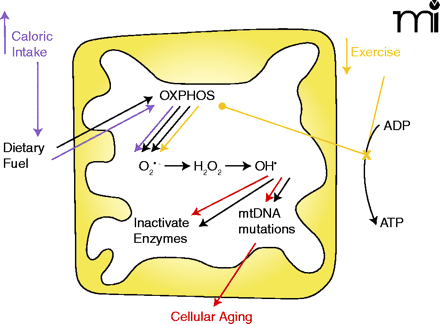
- Institution: Stanford Univ Med Ctr Lane Med Lib/Periodical Dept/Rm L109
- Sign In as Member / Individual
Estrogen and Mitochondria: A New Paradigm for Vascular Protection?

Mitochondria: Link between diet, exercise, and aging. The major role of mitochondria is to convert dietary fuel into ATP by oxidative phosphorylation (OXPHOS). As a by-product of this process, superoxide is produced within the mitochondria. Superoxide is converted by MnSOD to hydrogen peroxide and then by the Fenton reaction to a very potent ROS, hydroxyl radical. Production of ROS can cause two changes in the mitochondria: inactivation of enzymes with an iron-sulfur core and mutation of mtDNA. Accumulation of mtDNA mutations with advancing age is one mechanism of cellular aging. Increased caloric intake and decreased exercise are linked through these mitochondrial mechanisms to cellular aging. Increased caloric intake and increased dietary fuel input drives oxidative phosphorylation and increases superoxide production. This increases mtDNA mutations and increases the rate of cellular aging. Decreased exercise, by decreasing the utilization of ATP results in decreased levels of ADP, leading to stalling of the electron transport chain and diversion of electrons in the chain to produce ROS (14). Just as with increased caloric intake, increased ROS production caused by decreased exercise increases mutations of mtDNA and accelerates cellular aging.


